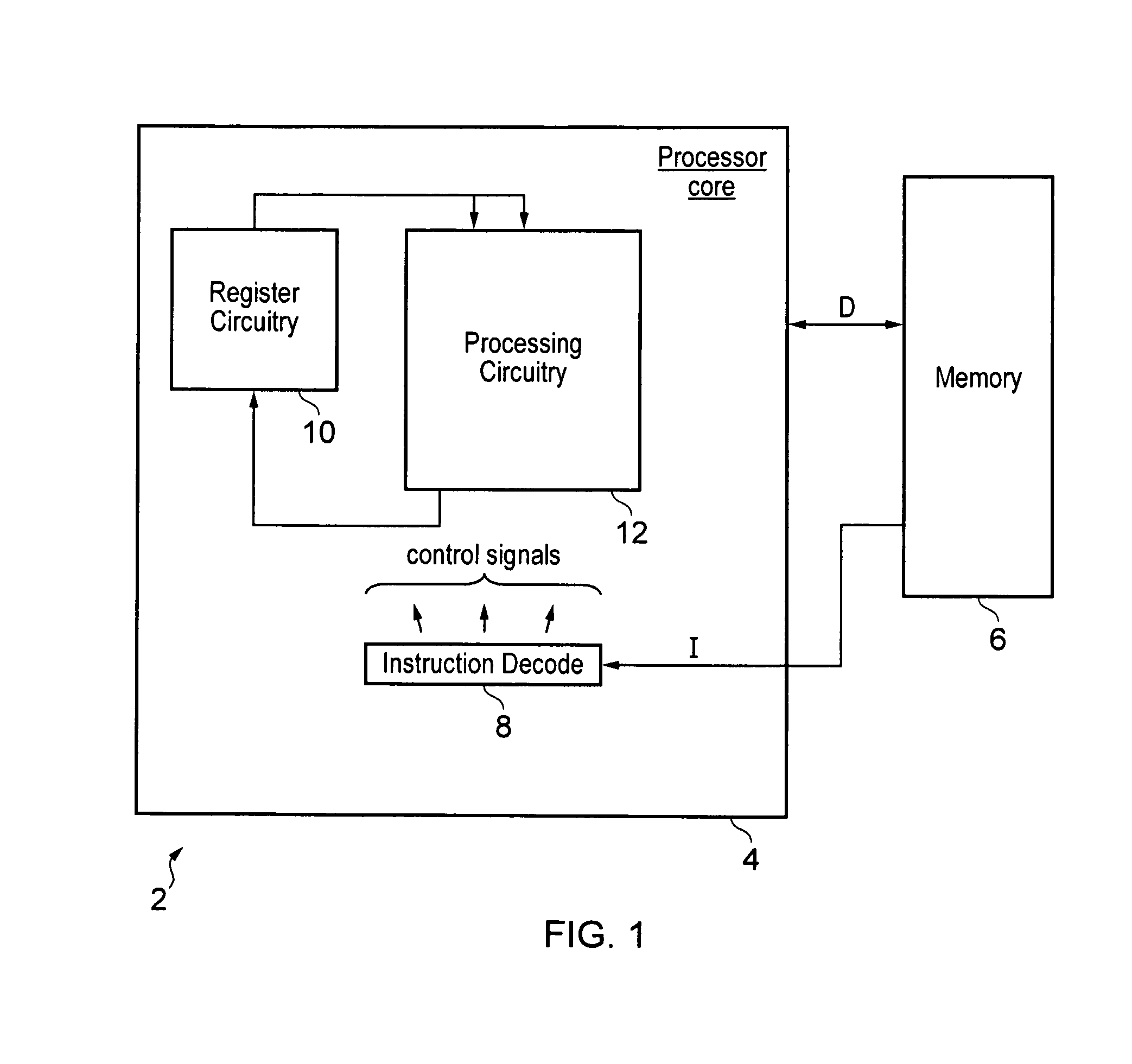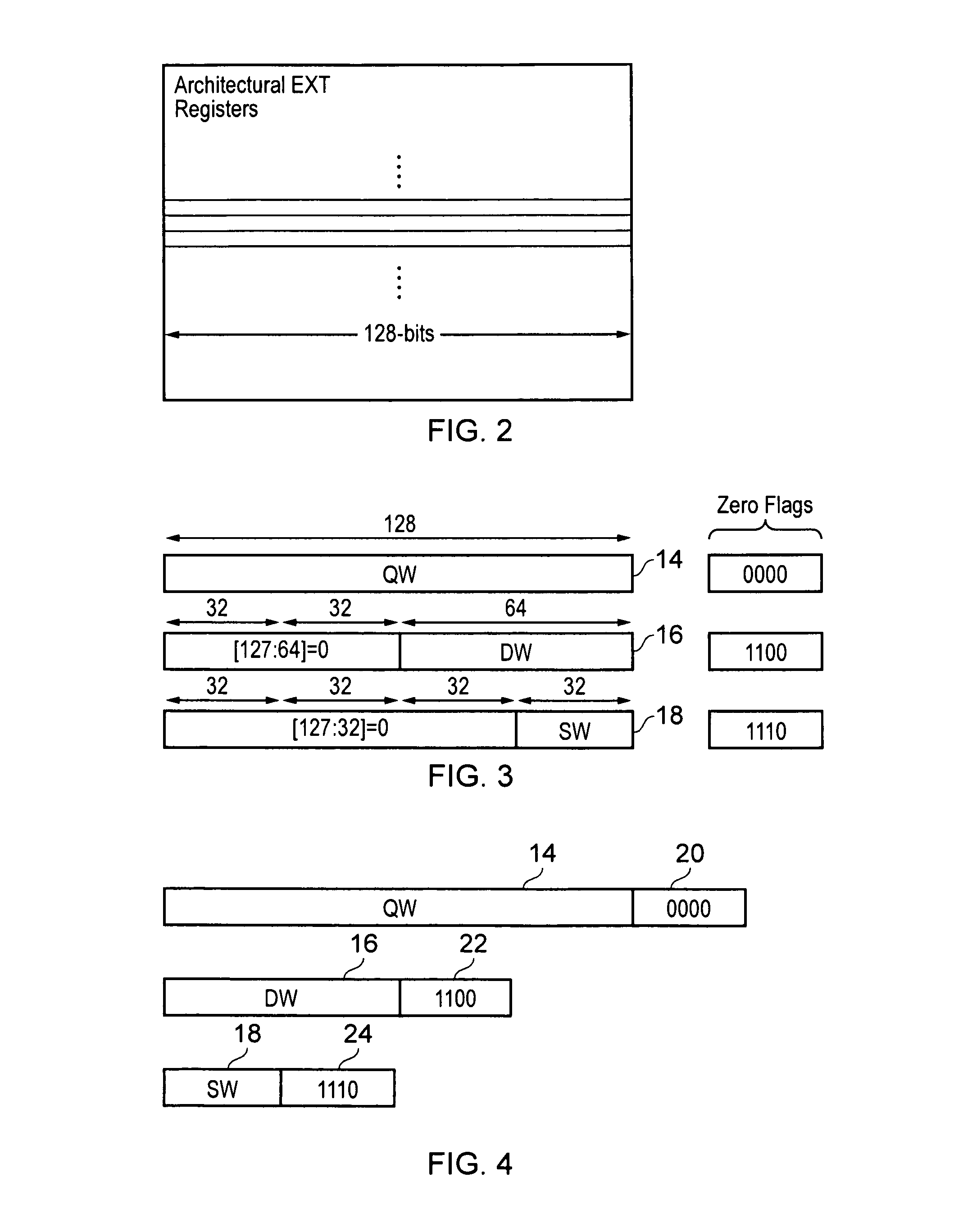Setting zero bits in architectural register for storing destination operand of smaller size based on corresponding zero flag attached to renamed physical register
a technology of architectural register and destination operand, applied in the field of data processing systems, can solve the problems of inefficient use of physical register resources, large physical overhead, and inability to push these zero values, so as to avoid unnecessary addition of additional delay and save energy and circuitry resources.
- Summary
- Abstract
- Description
- Claims
- Application Information
AI Technical Summary
Benefits of technology
Problems solved by technology
Method used
Image
Examples
Embodiment Construction
[0043]FIG. 1 schematically illustrates a data processing system 2 including a processor core 4 and a memory 6. The memory 6 stores data values to be manipulated and program instructions for controlling manipulation of those data values. The program instructions are fetched and decoded by instruction decode circuitry 8 to generate control signals which control register circuitry 10 and processing circuitry 12 to perform processing operations specified by those program instructions. The register circuitry 10 may include, for example, normal general purpose registers and extension registers. The normal general purpose registers may be 32 or 64 bit registers. The extension registers may be, for example, 128-bit registers used to store either single word, double word or quad word operands. The present technique will be described further in relation to the extension registers having a bit width of 128-bits, but the present technique could equally be applied to the general purpose register...
PUM
 Login to View More
Login to View More Abstract
Description
Claims
Application Information
 Login to View More
Login to View More - R&D
- Intellectual Property
- Life Sciences
- Materials
- Tech Scout
- Unparalleled Data Quality
- Higher Quality Content
- 60% Fewer Hallucinations
Browse by: Latest US Patents, China's latest patents, Technical Efficacy Thesaurus, Application Domain, Technology Topic, Popular Technical Reports.
© 2025 PatSnap. All rights reserved.Legal|Privacy policy|Modern Slavery Act Transparency Statement|Sitemap|About US| Contact US: help@patsnap.com



